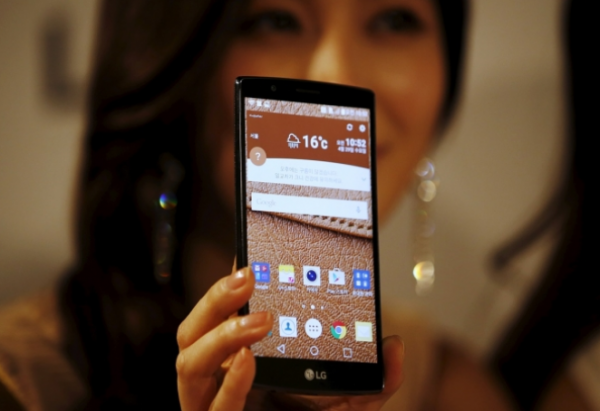By Lynn Palec, | January 22, 2016

LG G5 is going to be the best phone to be released later in 2016.
For the curious ones, those black dots located, most of the time, on the top middle part of a smartphone is called proximity sensors.
For most people, these black dots look a bit ugly and offset the whole aesthetic of a smartphone. However, these sensors are essential in the design of a smartphone as it helps in determining whether the user is holding the device into their face, just like when making a phone call. For optical sensors, it is necessary. However, a tech company may have finally found the answer to this in the form of an ultrasonic sensor.
Like Us on Facebook
Compared to optical sensors, ultrasonic sensors use audio components that can be installed into a device's speaker. It is more accurate and can be easily hidden deep underneath the phone's casing. Elliptic Labs claims to have created this technology. The company has managed to create a technology that turns a smartphone's built-in microphone and earpiece into a sonic proximity sensor.
In a statement acquired by Mashable, Elliptic Labs CEO Laila Danielsen said, "You have to have these holes on your device, and [manufacturers] are trying to make their devices symmetric and having a difficult time. We are using ultrasound, and we're using the current components that you have in phone."
Many analysts said that Android-based devices are the ones that will benefit on this new technology. Samsung, one of the world's biggest providers of Android-based devices, designs its smartphones with twin sensor dots located right next to the front facing camera.
Experts believe that there are other significant reasons to switch to ultrasonic sensors from optical sensors. One reason is hardware real-estate. By ditching the optical sensors, smartphone manufacturers can use the space to put other more important hardware components like a larger battery pack.
According to The Verge, ultrasonic proximity sensors from Elliptic Labs can be installed on a phone's existing earpiece or mouthpiece. Additionally, by ditching optical proximity sensors, phone manufacturers can save on their production costs. Elliptic Labs claims that ultrasonic proximity sensors are cheaper to produce and are more reliable compared to their optical counterparts.
-
Use of Coronavirus Pandemic Drones Raises Privacy Concerns: Drones Spread Fear, Local Officials Say

-
Coronavirus Hampers The Delivery Of Lockheed Martin F-35 Stealth Fighters For 2020

-
Instagram Speeds Up Plans to Add Account Memorialization Feature Due to COVID-19 Deaths

-
NASA: Perseverance Plans to Bring 'Mars Rock' to Earth in 2031

-
600 Dead And 3,000 In The Hospital as Iranians Believed Drinking High-Concentrations of Alcohol Can Cure The Coronavirus

-
600 Dead And 3,000 In The Hospital as Iranians Believed Drinking High-Concentrations of Alcohol Can Cure The Coronavirus

-
COVID-19: Doctors, Nurses Use Virtual Reality to Learn New Skills in Treating Coronavirus Patients











